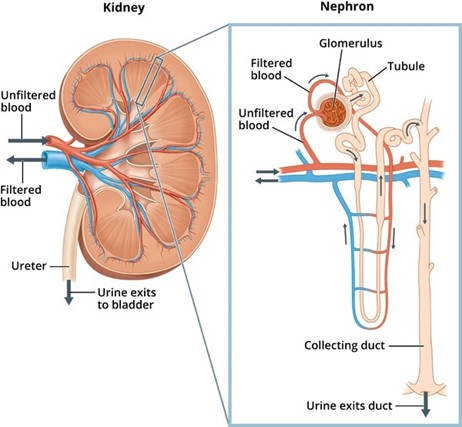When performing a physical examination on a client with cirrhosis, a nurse notices that the abdomen is enlarged. Which of the following interventions should the nurse consider?
Report the condition to the physician immediately.
Provide the client with nonprescription laxatives.
Measure abdominal girth according to a set routine.
Ask the client about food intake.
The Correct Answer is C
Measure abdominal girth according to a set routine. Abdominal enlargement is a common finding in clients with cirrhosis, which is a condition characterized by liver scarring and impaired liver function. Measuring abdominal girth regularly is an important nursing intervention to monitor the progression of abdominal distention and to identify potential complications such as ascites, which is an accumulation of fluid in the abdomen.
Choice A, reporting the condition to the physician immediately, may be necessary if the abdominal enlargement is sudden or accompanied by other symptoms such as severe pain or shortness of breath.
Choice B, providing the client with nonprescription laxatives, is not indicated for abdominal enlargement in clients with cirrhosis.
Choice D, asking the client about food intake, is not relevant to the assessment of abdominal enlargement in clients with cirrhosis.
Nursing Test Bank
Naxlex Comprehensive Predictor Exams
Related Questions
Correct Answer is {"dropdown-group-1":"C"}
Explanation
The correct answer is nephron. The nephron is the smallest structure in the kidneys that forms urine, and it is composed of the renal corpuscle and the renal tubule.

Correct Answer is D
Explanation
Cerebrospinal fluid is cloudy in nature. Cloudy cerebrospinal fluid is a sign of infection or inflammation in the central nervous system, and lumbar puncture can be used to obtain cerebrospinal fluid for diagnostic purposes. The nurse should report this finding immediately to the physician for further evaluation and management.
Choice A, client states a piercing feeling, is incorrect because a piercing feeling is common during the procedure due to the insertion of the needle into the subarachnoid space.
Choice B, physician maintains aseptic procedure, is incorrect because maintaining aseptic technique during the procedure is standard protocol to prevent infection.
Choice C, client states a pressure relief in the head, is incorrect because this is not a concerning finding during the procedure.
Whether you are a student looking to ace your exams or a practicing nurse seeking to enhance your expertise , our nursing education contents will empower you with the confidence and competence to make a difference in the lives of patients and become a respected leader in the healthcare field.
Visit Naxlex, invest in your future and unlock endless possibilities with our unparalleled nursing education contents today
Report Wrong Answer on the Current Question
Do you disagree with the answer? If yes, what is your expected answer? Explain.
Kindly be descriptive with the issue you are facing.
